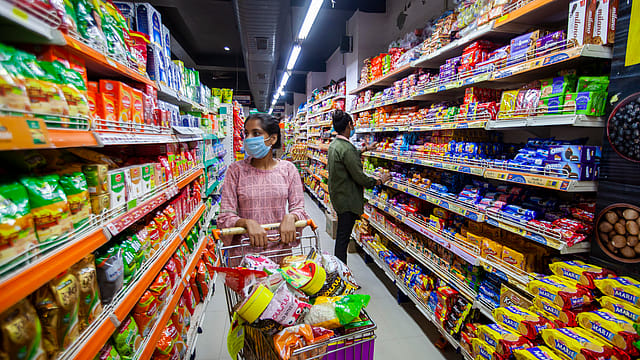FMCG majors cut prices 2-20% to shore up growth
ADVERTISEMENT

FMCG companies are overlooking the pain of weak margins and instead taking steps to pump up volume growth as the second quarter draws to a close. For now, the soaps category is where the price cut is being initiated.
From the beginning of Q1 FY22 to Q1 FY23, Hindustan Unilever (HUL) and ITC had seen volume growth falling by 300 bps from 9% to 6% and 400 bps from 30% to 26%, respectively. Marico was the worst hit, with volumes falling into the negative territory from 21% to -6% over the same period. Nestle, too, has seen a dramatic fall in volume growth from 25% to 6.4%. (See: Feeling the Blues).
While FMCG firms had hiked prices, a fall in some key raw material prices (See: Still Raw And Tender) is prompting them to slash prices to spur volume growth. HUL has cut prices of soaps across some SKUs in west India. According to analysts at Edelweiss, the move shows that HUL is proactively protecting market share against regional players. As per analysts, HUL has cut prices for soaps and detergents between 2%-20% per cent. The cuts follow price increases of between 8% and 15% by FMCG players over the past year.
December 2025
The annual Fortune 500 India list, the definitive compendium of corporate performance, is out. This year, the cumulative revenue of the Fortune 500 India companies has breached $2 trillion for the first time. Plus, find out which are the Best B-schools in India.
Mehta had told analysts post-Q1 results that the 10-year median price for crude, caustic soda, polyethylene, and barley have all inflated by more than 50% and the prices are at a historic high. Similarly, palm oil prices had increased 100%. This has led to a 330 bps, year-on-year increase in HUL’s cost of goods sold during the quarter.
When raw material prices fall, analysts believe, regional players tend to come back in terms of promotion and ad-spends. Godrej Consumer, too, had cut prices of select SKUs in soaps. Analysts expect the entire industry to follow suit as the price of palm fatty acid distillate – a key input for soaps -- has fallen 44% on a quarter-on-quarter basis.
FMCG companies were on a price-hike spree for the past two years to pass on the impact of higher raw material costs to the consumer. But the change in tactic is because there is a clear softening of rural demand, a big driver for FMCG revenues at 65-70%. Excessive monsoons in some areas and weak precipitation in other regions of the country have hit farm yields and, subsequently, household incomes.
Mehta had confirmed the pain in demand when he told analysts that “rural growth continues to lag growth in urban markets.” In fact, India's retail inflation spiked 7.41% in September, at the fastest pace in five months. What has queered the pitch for FMCG firms is that the rupee, too, has fallen over 10% against the dollar during the year, which has made imports costlier.
By prioritising market share, FMCG companies will have to sacrifice margins at the altar of growth, at least for the current quarter. According to analysts at IIFL Securities, most FMCG companies will see a contraction in gross margin in the second quarter owing to the consumption of high-cost inventory. “Aggregate Ebitda margin is expected to contract by 150 bps YoY, '' mentions the IIFL report. Industry major HUL’s EBITDA margins stood at 23.2% in Q1.
Varun Berry of Britannia Industries told analysts post Q1 results that the price hikes thus far won’t help but was expecting things to get better in Q2. “We've taken necessary price increases which are really not covering inflation at this point in time but a good part of this will be covered by Q2 of this year.” Britannia, too, has seen negative volume growth in Q1.
Thus far, the Nifty FMCG index has held up with 15% gains year to date, but over the past month, it is down 2%. The second quarter numbers and management narrative could well determine which way the wind is blowing.
